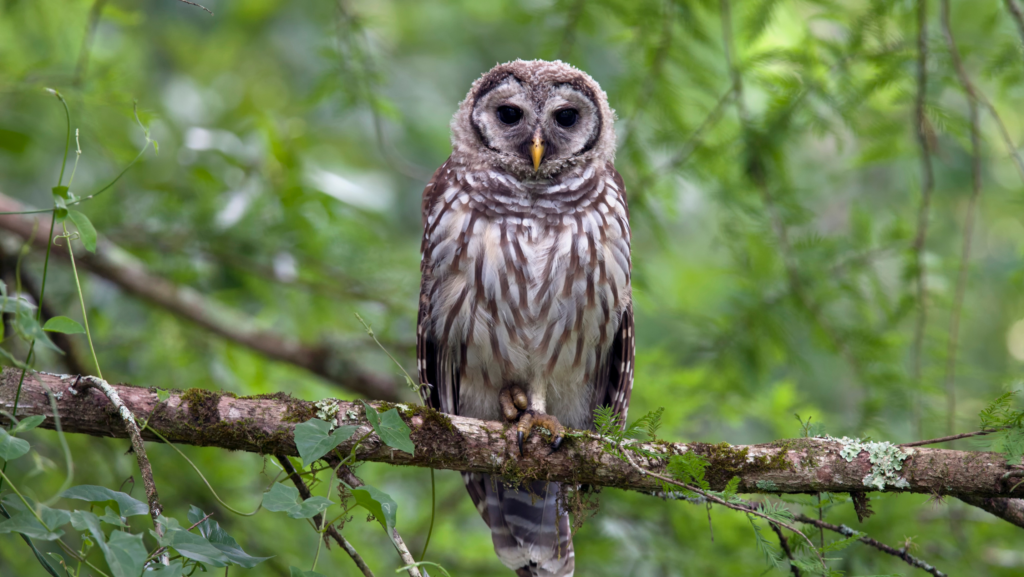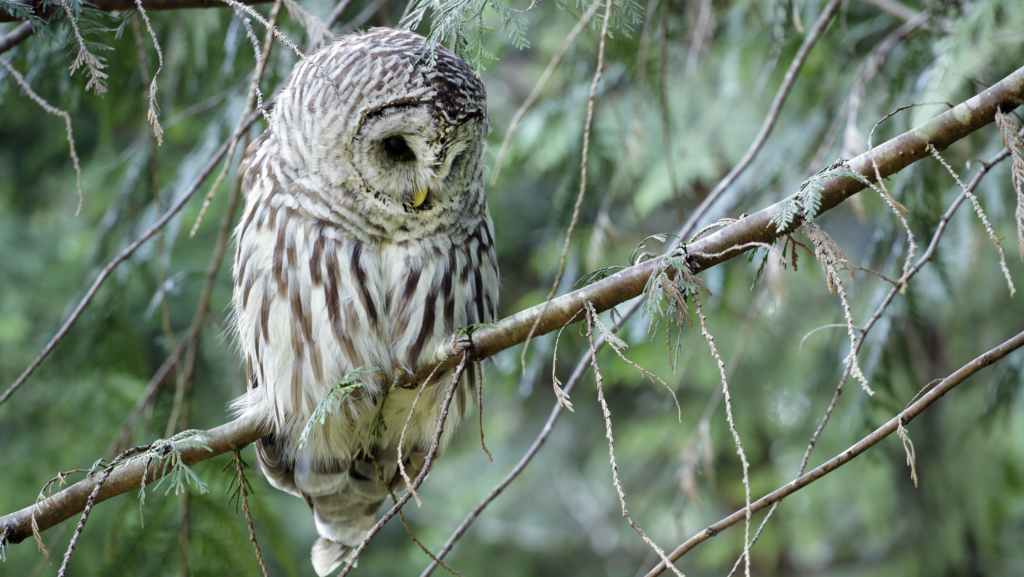Birth:

Barred owls (Strix varia) typically lay their eggs in tree cavities, abandoned nests of other birds, or even on open branches. The female owl usually lays 2-4 eggs, and the incubation period lasts around 28-33 days. Once the eggs hatch, the downy owlets emerge, blind and helpless, relying on their parents for warmth and nourishment.
Growth and Development:
As the owlets grow, they undergo significant changes. Their downy feathers are gradually replaced by more mature plumage, and their eyes, initially closed, open to reveal the distinctive dark eyes characteristic of barred owls. The parents play a crucial role in caring for the young, bringing them food and teaching them essential hunting and survival skills. The fledging period, during which the young owls learn to fly, typically occurs around 4-5 weeks after hatching.
Life and Habitat:

Barred owls are adaptable birds found in a variety of habitats, including dense forests, swamps, and wooded areas near water sources. They are primarily nocturnal, hunting during the night and roosting in trees during the day. Their distinctive hooting calls, often described as sounding like “Who cooks for you? Who cooks for you all?” are a common sound in the wooded areas they inhabit.
Food and Hunting:
Barred owls are carnivorous and have a diverse diet that includes small mammals such as mice, voles, and rabbits. They are also skilled hunters of birds, reptiles, and amphibians. Their hunting technique involves perching on a high vantage point, waiting for prey, and then silently swooping down to catch it with their powerful talons. Barred owls are known for their adaptability and have been observed hunting in both dense forests and more open habitats.
Reproductive Cycle:
Barred owls typically reach reproductive maturity at the age of one year. They form monogamous pairs that may mate for life. Breeding season usually begins in late winter or early spring. The courtship involves various vocalizations, including hooting and cackling calls. The pair engages in mutual preening and may perform aerial displays. After successful courtship, the female selects a suitable nesting site, and the pair collaborates to raise and care for their offspring.
Death and Longevity:

The lifespan of barred owls in the wild is variable, with factors such as predation, accidents, and diseases influencing their longevity. On average, they may live to be around 10-15 years old. Mortality rates are higher in the first year of life when the young owls are more vulnerable. Predators such as larger owls, hawks, and mammals pose threats, especially to younger barred owls.
As with many species in the wild, the life of a barred owl is a delicate balance of survival instincts, adaptation to their environment, and the ongoing cycle of birth, growth, reproduction, and, eventually, death.

